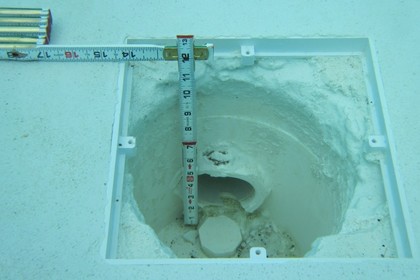Expect These Changes in Swimming Pool and Spa Drain Covers

Wednesday, April 18, 2018
Ten years ago this month, the Virginia Graeme Baker Pool & Spa Safety Act was signed into federal law. At the time, it plunged the pool, spa and hot tub world into turmoil. Public facilities were hit especially hard, as they had one year to outfit pools with compliant drain covers. Some were forced to close when these products were nowhere to be found.
Head’s up! The drain cover standard named in VGB is changing in 2018. Are we in for more turmoil? Not if professionals learn how to implement the new requirements. Here are some of the very basics in ensuring that a pool is compliant.
A new approach
Unfortunately, the vocabulary that we often use hasn’t caught up with changes in the standard. ANSI/APSP-16 now takes a more holistic approach and addresses suction outlet fitting assemblies (SOFAs), which include everything between the cover and suction pipe. However, the VGB Act still uses the term “drain covers.” This overly simplistic word perpetuates the misunderstanding that compliance involves simply plopping down a certified piece of plastic held in place by a couple stainless-steel screws.
But the reality has become more complex. Now, when examining pools and spas for compliance, professionals must be aware of the entire SOFA and certain aspects of the circulation system — not just the certification stamp on the drain cover.
(But, make no mistake: If the drain’s parts are damaged, cracked or broken, it falls out of compliance.)
Expiration date and documentation
To comply with VGB, the drain cover must not have surpassed its expiration date — or its “life in years.” If the installation year cannot be documented reliably, then it’s considered out of compliance.
Documentation requirements have become more extensive. These changes are retroactive for public pools, and will likely pose the biggest challenge. Historically, a service professional’s or distributor’s invoice has sufficed, just to show the installation date.
But going forward, more detailed records for each drain cover must be kept at the facility. Manufacturers must provide key information, such as the product name, part number, service life in years, and permissible flow ratings with different sump configurations. They also must include a sticker or document on which this information can be transferred by the contractor, along with the installation date and exact location of each drain cover — which pool or spa it’s placed in, and where in the vessel it’s been installed — so health officials can identify the facts relevant to each.
Flow parameters
Pools fall out of compliance if the pump’s flow potential exceeds the drain’s rating.
When assessing whether a pool or spa meets VGB, find out the minimum flow needed on the drain cover to accommodate the maximum flow of the pump and circulation system.
Professionals can quickly and safely calculate the maximum flow by using the highest indicated flow rate on the pump curve. However, this is not typically a cost-effective solution for pumps larger than 3 horsepower or pools and spas with multiple pumps. These systems often are tightly engineered to function at the midrange of the pump’s potential flow, so drain covers capable of accepting the pump’s maximum flow often aren’t necessary. Instead, use a flowmeter or measure the system’s total dynamic head to more accurately determine the system’s flow.
Fastening quality
When a drain cover is not secured according to manufacturer instructions — using the designated screws and hardware — it falls out of compliance.
Always make sure screws are secure.
This also involves examining the sump-bucket or mud frame. Is it structurally in good shape? Specifically, are female fastener points solid and able to receive at least three threads of screw engagement?
If in doubt, don’t risk it. If female fastening points are stripped out, or the pool surface is so deteriorated that the assembly could pull free, replace the sump or frame, or bypass the components by installing a larger cover over it and fastening it with anchors placed directly in the concrete. But only bypass if manufacturer instructions allow!
Manufacturers should provide instructions on what to do if fasteners are stripped out or otherwise problematic.
Sump depth
For years, sump depth — the distance between the cover’s underside and the suction pipe opening— has been considered an important aspect of drain safety.
However, minimum sump depth is not as easy to determine as before. In the past, manufacturers often specified this distance in equivalent pipe diameters, requiring at least 1½ times the largest suction pipe diameter. But this approach has been deleted from the standard. Now, manufacturers must test each sump configuration that they plan to allow, and specify the minimum depth in inches, centimeters, etc.
In the early days of VGB, the importance of sump depth wasn’t commonly known or understood. Because of this, many covers have been mismatched with their sumps. When preparing to replace a drain cover, professionals must take extra care here. The temptation is to substitute the existing cover with one just like it. But you should check to make sure the existing sump meets the manufacturer’s instructions.
Manufacturer instructions have never been more important
Producers must provide more specific information than ever before, including every kind of sump configuration that can be paired with the drain cover, the allowable flow for each type of sump, and how to respond if fasteners are no longer suitable. Because of this, manufacturer instructions must be followed to the letter.
These are just the basics. To learn more, reach out to drain cover makers for all the nitty-gritty details. They should know the do’s and don’ts for each of their products, and they can suggest alternatives for unusual situations.